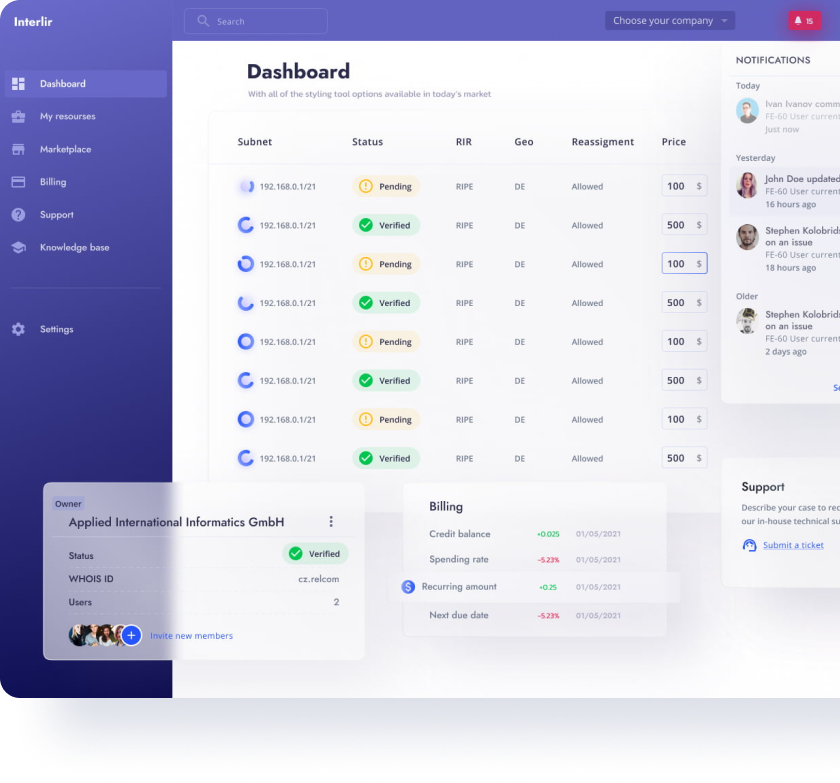In the complex realm of networking, one of the fundamental decisions you need to make is whether to opt for static or dynamic IP addresses. These two options form the backbone of your network’s addressing system, and your choice can significantly impact your online experience.
Static IP Addresses: The Bedrock of Stability
Static IP addresses are, as the name implies, unchanging. When you set up a device with a static IP address, that address remains constant. This means every time you connect to your network, your device will be assigned the same IP address, and it won’t change until you manually modify it.
Pros of Static IP Addresses:
1. Reliability: The stability of a static IP address is advantageous for certain applications, like web hosting, where users need to reach your server using a consistent address.
2. Better for Remote Access: When you require remote access to specific devices or services on your network, a static IP is a more convenient choice.
3. Supports VoIP and Video Conferencing: Static IPs are ideal for VoIP (Voice over Internet Protocol) services and video conferencing, ensuring a consistent connection for clear communication.
Cons of Static IP Addresses:
1. Cost: Generally, static IP addresses can be more expensive than dynamic ones, making them less appealing for budget-conscious users.
2. Susceptible to Attacks: Because the IP remains constant, it can be a more attractive target for potential hackers. Enhanced security measures are necessary to mitigate this risk.
3. Limited Anonymity: Static IPs can make it easier for websites and services to track your online activity and location, which may raise privacy concerns.
Dynamic IP Addresses: The Shape-Shifters of the Digital World
Dynamic IP addresses, on the other hand, are ever-changing. Each time you connect to your network, your device is assigned an available IP address from a pool maintained by the Dynamic Host Configuration Protocol (DHCP) server.
Pros of Dynamic IP Addresses:
1. Enhanced Security: The changing nature of dynamic IP addresses can provide a degree of security by making it harder for potential threats to track your online activities.
2. Ease of Use: There’s no need for manual IP address configuration, making dynamic IPs user-friendly, especially for less tech-savvy individuals.
3. Cost-Efficient: Dynamic IPs are typically more budget-friendly, which makes them an attractive choice for home users and small businesses.
Cons of Dynamic IP Addresses:
1. Less Suitable for Remote Access: If you require consistent, remote access to a specific device or service, dynamic IPs can complicate the process.
2. Limited DNS Support: Dynamic IPs may not work optimally with certain DNS web servers, potentially affecting services that rely on DNS.
3. Geolocation Challenges: Dynamic IP addresses can lead to less accurate geolocation data, affecting services that depend on your precise location.
When to Use Static or Dynamic IP Addresses
The choice between static and dynamic IP addresses largely depends on your specific needs:
- Static IP Addresses: These are best suited for businesses or individuals who require a consistent, reliable connection, especially for services like web hosting, VoIP, and video conferencing.
- Dynamic IP Addresses: For most consumers using the internet for everyday purposes, dynamic IPs are the more practical choice due to their cost-effectiveness and enhanced security.
In conclusion, the decision to choose between static and dynamic IP addresses is a crucial one that hinges on your particular requirements. Whether you opt for the stability of a static address or the flexibility of a dynamic one, understanding their implications is the first step toward building a network that caters to your needs and preferences.




